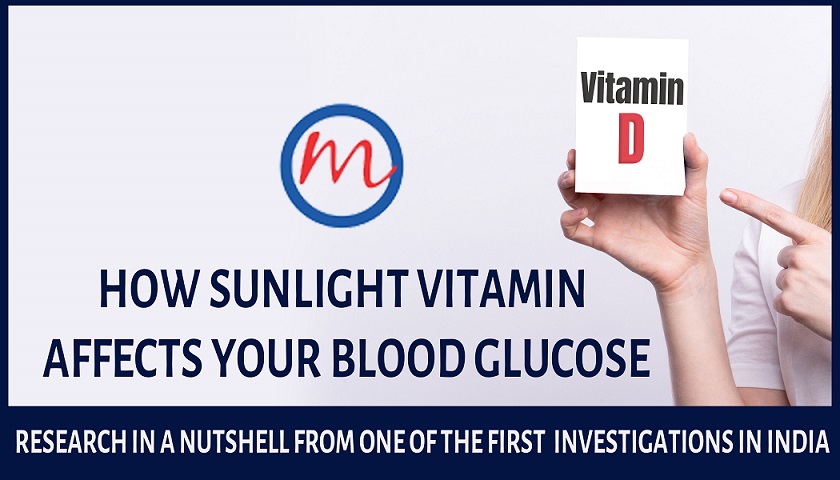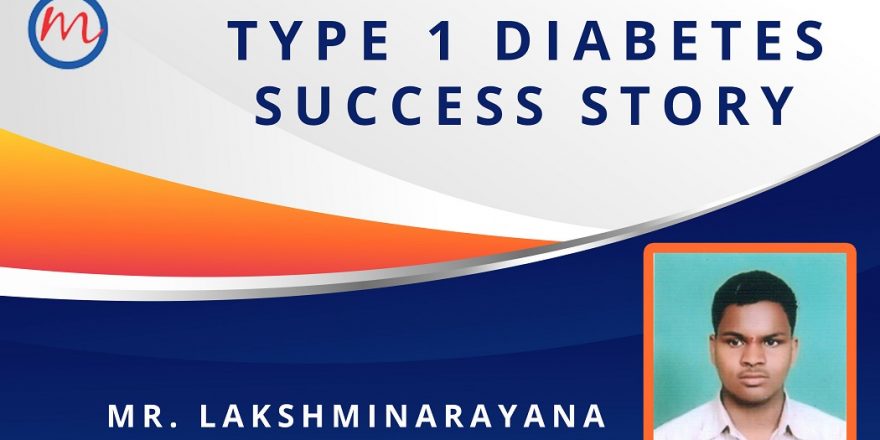THE STUDY OF VITAMIN D
The study of vitamin D has been of great interest to researchers for more than a century. There is emerging evidence on the crucial role of vitamin D not just in bone health but also in other physiological functions, including cell function, insulin production, and immune functions. The paradox is: vitamin D deficiency is rampant across the world—about 40 percent in developed countries and more than 90 percent in India and other Asian countries.
At a time diabetes is spreading across the world as a scourge of modern lifestyle, scientists are honing in on the link between vitamin D deficiency and a rise in blood sugar. Very few population-based studies have been conducted to assess this, especially in India. Here we report on one of the first investigations into the prevalence of vitamin D deficiency among people with normal blood glucose, pre-diabetes and type 2 diabetes in an urban setting of South India.
Although the current methods of treating type 2 DM have improved, prevention is preferable. This study has been carried out with that object by the scientists of the Madras Diabetes Research Foundation and Dr. Mohan’s Diabetes Specialities Centre in Chennai, India. Led by Ramamoorthy Jayashri, it has been accepted in April 2020 for publication in the peer-reviewed journal, The British Journal of Nutrition. We present a summary of the main arguments of the papers in simple terms for our readers.
The study reports the following findings:
1) The levels of vitamin D circulating in the blood, 25(OH)D, came down the more abnormalities in glucose absorption rises
2) Vitamin D deficiency was higher in women compared to men
3) Vitamin D deficiency increased significantly with obesity, metabolic syndrome and insulin resistance.
VITAMIN D AND BLOOD SUGAR
Mild to moderate vitamin D deficiency has been identified as one of the risk factors for type 2 diabetes (T2DM). In common terms, that means, the cells in your muscles, fat and liver do not respond well to insulin, the hormone that allows the body to use sugar. And the beta cells in the islets of Langerhans of the pancreas do not secrete optimally the most important hormone the pancreas produces—insulin.
In studies conducted in the West, diabetes and pre-diabetes have been linked to low concentration of the key vitamin D circulating in blood: 25-hydroxyvitamin D or simply serum 25(OH)D. In a milestone meta-analysis conducted through 2007, researchers of Tufts Medical Center, US, observed how insufficient vitamin D and calcium negatively influenced the presence of glucose in the blood. And that combined supplementation with both the nutrients played a preventive role in type 2 diabetes.
GLOSSARY OF DEFINITIONS
Understanding medical terminology can be a challenge. Here we offer easy explanation of a few biomedical terms and abbreviations, that should make for easy reading”
Glucose homeostasis is the balance of insulin and glucagon to maintain blood glucose. The pancreas maintains blood glucose levels through various hormones, particularly glucagon and insulin.
Glucose tolerance refers to the abnormalities in the way the body handles glucose after a meal, often before fasting blood glucose level becomes abnormal.
Normal glucose tolerance (NGT) means that an individual is able to break down the amount of glucose in the body.
Impaired fasting glucose [IFG] means that blood sugar increase after you haven’t eaten for a while – for example, in the morning, before breakfast.
Impaired glucose tolerance [IGT] means that blood glucose is raised beyond normal levels, but not high enough to warrant a diabetes diagnosis.
Insulin resistance (IR) means the body is unable to respond to the amount of insulin it is producing. IR is a condition linked to pre-diabetes and type 2 diabetes.
Pre-diabetes is the metabolic state between normal glucose homeostasis and diabetes.
Metabolic syndrome is defined as the presence of any three of five abnormalities: abdominal obesity (waist circumference of ≥90 cm for men and ≥80 cm for women); high blood pressure; elevated fasting glucose; high triglycerides; low HDL cholesterol.
THE KEY TAKEAWAYS
First of its kind study: This was the first study from Southern India to determine the levels of 25(OH)D in blood circulation among people with NGT, pre-diabetes and T2DM. Many studies have reported the prevalence of vitamin D deficiency in healthy populations in both the Western populations as well as the Indian population. However, there are no data, which reports on the prevalence of vitamin D deficiency in individuals with glucose tolerance.
Vitamin D deficiency: The overall prevalence of vitamin D deficiency was found to be 55 percent. The highest prevalence of vitamin D deficiency was observed among diabetic individuals (63%), followed by pre-diabetes (58%) and NGT (51%).
In comparison: The prevalence of vitamin D deficiency is more or less the same even among the healthy NGT population in South India (51%) compared to studies conducted in Australia (2012) and central Iran (2018).
Women vs men: Many studies have reported a higher prevalence of vitamin D deficiency among women than men. This study also found vitamin D deficiency to be 1.6 times higher in women when compared to men.
Lower risk of T2DM: It has been reported that higher circulating vitamin D was associated with a lower risk of T2DM, and this association was stronger among individuals with pre-diabetes. In the present study, it was observed that 63 per cent of people with T2DM had vitamin D deficiency. And, more people with T2DM had vitamin D deficiency compared to those with pre-diabetes (58%) and NGT (51%). Scholars have probed if vitamin D deficiency may also be a risk factor for insulin resistance as well as metabolic syndrome. The present study found this association.
Vitamin D deficiency and obesity: Over the past decade, various studies have reported an association between vitamin D deficiency and obesity. This study also found the same association. For people with abdominal obesity, the risk for vitamin D deficiency was 1.5 times higher than those without abdominal obesity, while it was 1.6 times more in those with generalized obesity.
Sunlight and other things: The increasing prevalence of vitamin D deficiency in our country could be attributed to high melanin skin content, lack of sunlight exposure, clothing habits (well covered when out in the sun), inadequate dietary consumption of foods rich in vitamin D due to predominant vegetarian dietary habits and limited availability of fortified foods. In addition, an increase in the number of hours spent indoors due to modernization and changing work culture especially in urban Indians could be one of the reasons for the high prevalence of vitamin D deficiency.
THE LAST WORD
The strengths of the study are that the participants were recruited from a population-based study in an ethnic group with a high prevalence of T2DM. Moreover, people were classified into different grades of glucose tolerance—NGT, pre-diabetes and T2DM—using oral glucose tolerance tests. One of the limitations of the study was that being a cross-sectional design, it did not demonstrate a cause-and-effect relation between serum 25(OH)D with T2DM. Moreover, details about sunlight exposure of the participants were not known.



